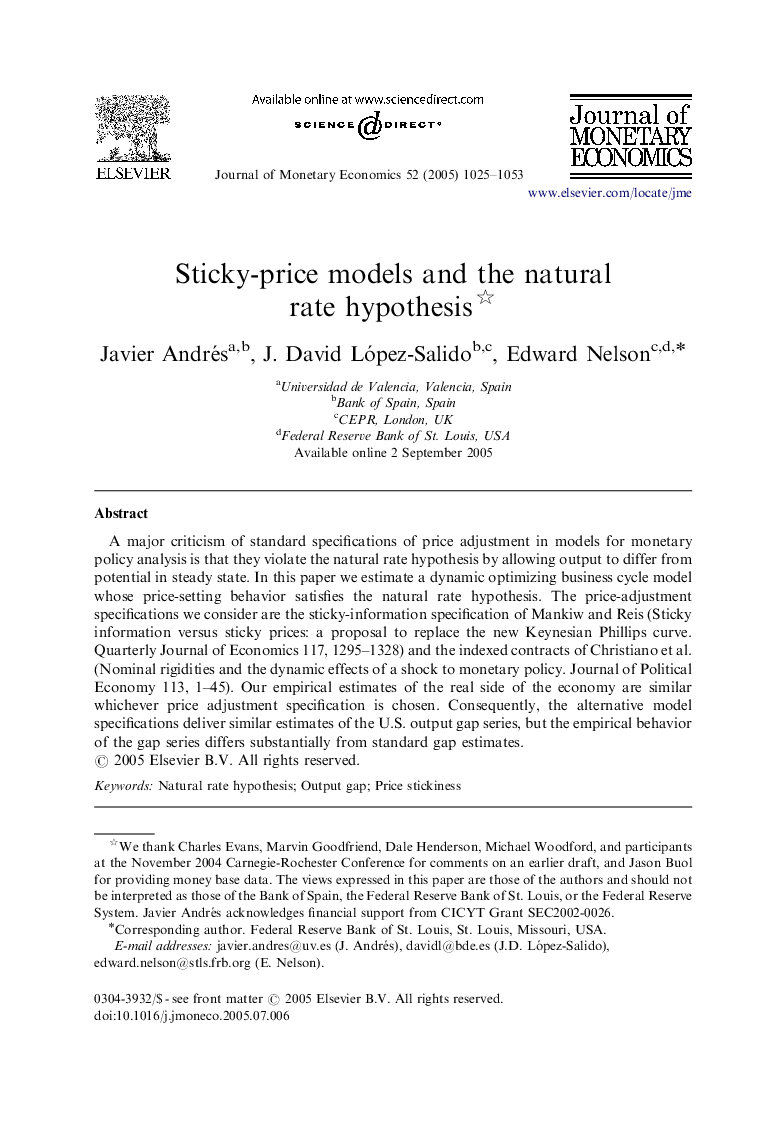| Article ID | Journal | Published Year | Pages | File Type |
|---|---|---|---|---|
| 10478479 | Journal of Monetary Economics | 2005 | 29 Pages |
Abstract
A major criticism of standard specifications of price adjustment in models for monetary policy analysis is that they violate the natural rate hypothesis by allowing output to differ from potential in steady state. In this paper we estimate a dynamic optimizing business cycle model whose price-setting behavior satisfies the natural rate hypothesis. The price-adjustment specifications we consider are the sticky-information specification of Mankiw and Reis (Sticky information versus sticky prices: a proposal to replace the new Keynesian Phillips curve. Quarterly Journal of Economics 117, 1295-1328) and the indexed contracts of Christiano et al. (Nominal rigidities and the dynamic effects of a shock to monetary policy. Journal of Political Economy 113, 1-45). Our empirical estimates of the real side of the economy are similar whichever price adjustment specification is chosen. Consequently, the alternative model specifications deliver similar estimates of the U.S. output gap series, but the empirical behavior of the gap series differs substantially from standard gap estimates.
Related Topics
Social Sciences and Humanities
Economics, Econometrics and Finance
Economics and Econometrics
Authors
Javier Andrés, J. David López-Salido, Edward Nelson,
